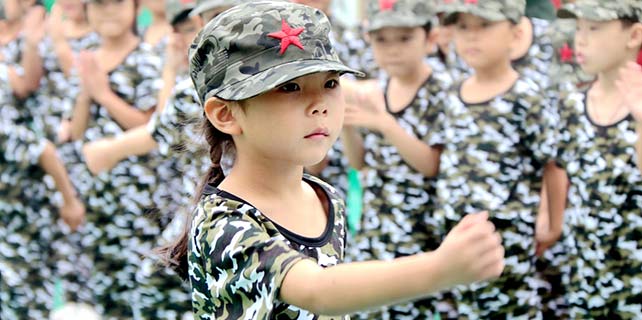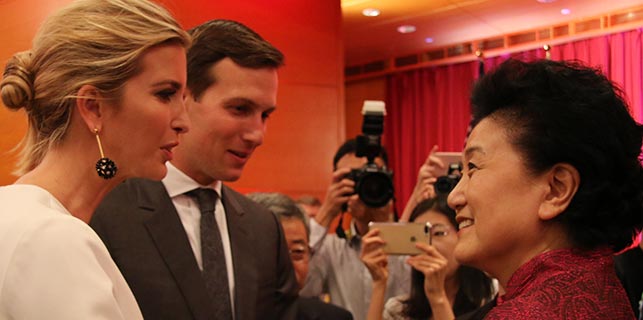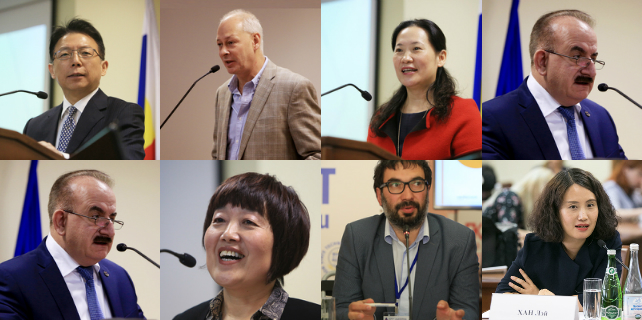Progress in protecting human rights
Editor's note: China has made many achievements in protecting human rights over the last five years. Five experts share their views with China Daily. Excerpts below:
Shot in the arm from economic development
China's human rights protection has seen significant improvements thanks to its booming economy in the past three decades. China's economic development has been a shot in the arm for its people's well-being, with scores of jobs created and the average wage raised. Yet the focus on economic growth has not just improved people's livelihoods; it has also laid the foundation for better protection of human rights.
Empowered by sustainable economic growth, China has made notable progress in securing the right to life of the impoverished population and the right to work of the working-age population, while improving people's living conditions.
As a drafter and signatory to the UN Charter and a staunch advocate of the Universal Declaration on Human Rights, China had joined 26 human rights treaties as of last year and kept frequent exchanges, both academic or grassroots, with the rest of the world on human rights. It is expected to contribute more to human rights protection as a responsible major power.
Zhu Jiping, a human rights researcher at Northwest University of Political Science and Law
Women's rights better protected by law
China has stepped up its efforts to achieve the comprehensive development of women's rights by releasing the National Human Rights Action Plan (2016-20) and enhancing the legal protection of women's rights.
To better protect the rights of women, laws have been passed over the past five years to make it the responsibility of employers to prevent and curb sexual harassment against female employees, and to impose harsher punishments on those trafficking women and children, and those who resort to domestic violence.
Chinese women's political participation, too, has expanded.
More than 23 percent of the deputies attending the first session of the 12th National People's Congress, the top legislature, in 2013 were women, an increase of 2.1 percentage points compared with the last congress. And women's health has improved greatly with the average life expectancy increasing to 79.4 years.
Female workers have become common, as nearly 43 percent of Chinese employees, 25 percent of Chinese entrepreneurs, and 55 percent of those running internet tech startups are women.
The education gap between men and women is also narrowing.
The primary school enrollment increased to 99.8 percent in 2014, and female students account for about 52.4 percent of China's undergraduates and 49.7 percent of its postgraduate students.
Zhang Xiaoling, a professor at the Party School of the Communist Party of China Central Committee
More participation in governance
The people-oriented approach of the Communist Party of China is not only about people's economic well-being, but also safeguarding their right to development and other human rights. Under the guidance of the CPC's central leadership, governments at all levels have managed to minimize the harm inflicted on Chinese citizens by natural disasters including earthquakes and typhoons. The targeted poverty-alleviation program has also picked up speed over the years, as has the anti-graft campaign, boosting the efforts to secure the basic human rights of Chinese people.
Chinese citizens are offered wider access to social governance and political affairs, in particular, democratic elections, democratic management and democratic supervision. Their legislative participation has also improved at all levels. The enactment and amendment of the General Provisions of the Civil Law, for example, have solicited opinions from all walks of life.
On the judicial front, a number of miscarriages of justice have been rectified and institutional reforms launched to rule out power-money exchanges. As the country continues to streamline administration, delegate power to lower levels of government and cut red tape, more people will be able to enjoy the dividends of the comprehensive reforms.
Liu Jie, director of the Center for Human Rights Studies at the Shanghai Academy of Social Sciences
Action plan to help people with disabilities
For years, people with disabilities were considered among the weakest and poorest members of society, a burden on their families and the society. Things started to change in 1988, when the China Disabled Persons' Federation was founded. During the 12th Five-Year Plan period (2011-15), around 9.5 million people with disabilities received subsidies.
An action plan on assisting impoverished disabled residents, enacted this year, aims to strike a balance between subsidizing the disabled and targeted poverty alleviation. Other new approaches are taking shape. Citizens with physical impairments now have more choices regarding jobs, including local government jobs. They are also encouraged to resort to internet technologies to start their own businesses.
Caretakers of people with disabilities have been urged to provide more professional service to their customers, who are under the protection of more than 60 laws. The introduction of private capital might make a difference in this regard.
China, among the first countries that ratified the Convention on the Rights of Persons with Disabilities, is expected to make more contributions to the global cause of protecting the rights of people with disabilities.
Zhang Wanhong, a law professor at Wuhan University
Targeted efforts to support subsistence
China's success in lifting more than 700 million people out of poverty by the end of 2015, along with its ambition to eradicate poverty by 2020, shows that targeted poverty alleviation is an effective means of upholding the right to life of the impoverished population. Its poverty alleviation mechanism, in essence, is about improving the impoverished population's capability to be responsible for their own livelihoods.
Instead of providing subsidies, the government's poverty alleviation efforts are now aimed at improving the capability of impoverished residents to support themselves. The widely accepted indicators of poverty, such as income and consumption, do not tell the whole story.
The assessment of multiple indicators, including assets, health, education background and living conditions, has efficiently identified those unqualified for government support. That allows local governments to ensure the assistance programs and aid, from work guidance to subsidies, end up in the right hands. This revised approach, if carried through, can also stop people slipping back into poverty.
Meng Qingtao, a researcher on human rights studies at Southwest University of Political Science and Law






















